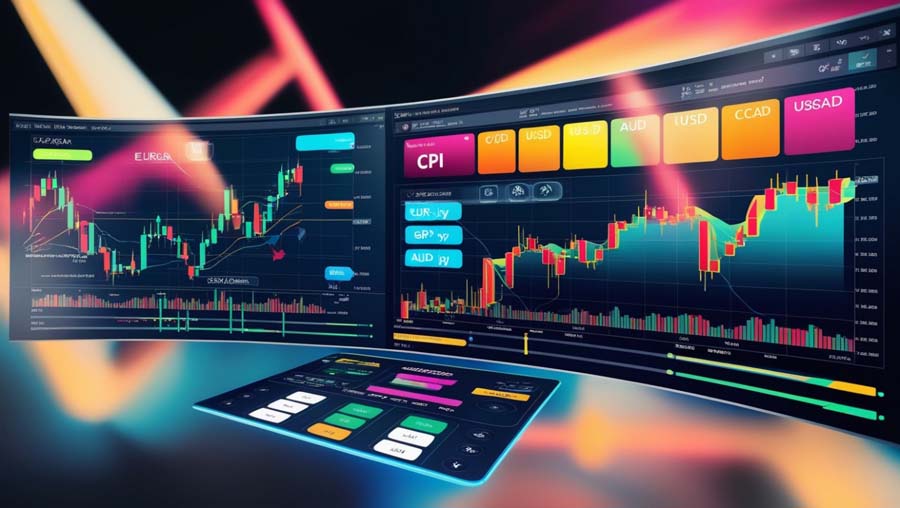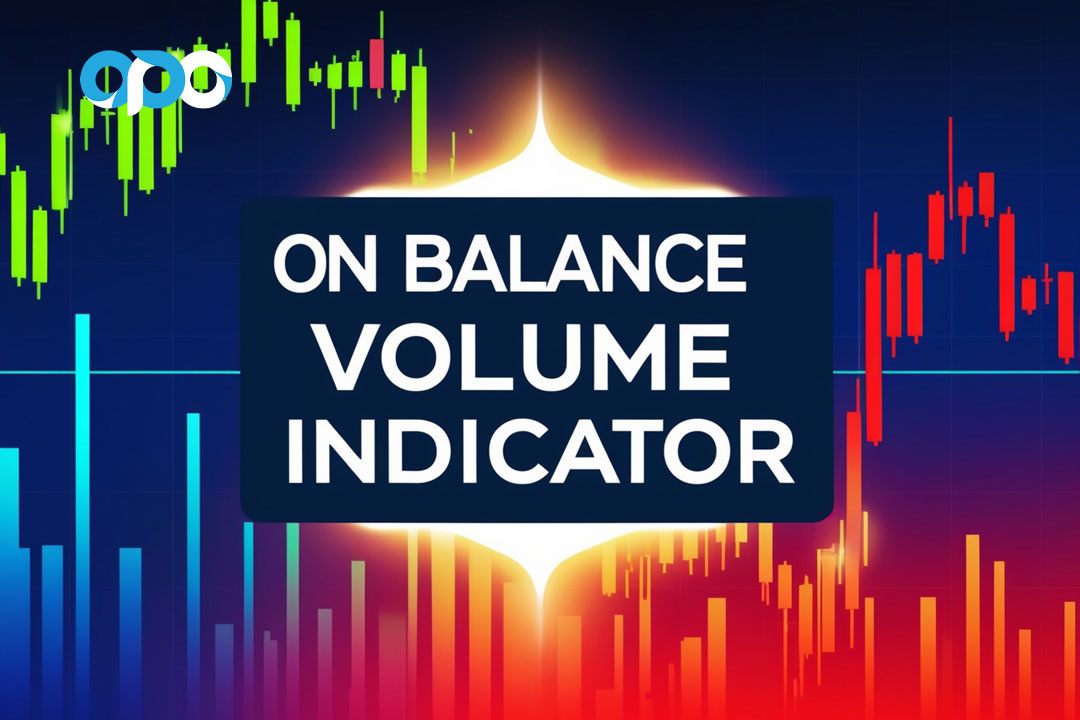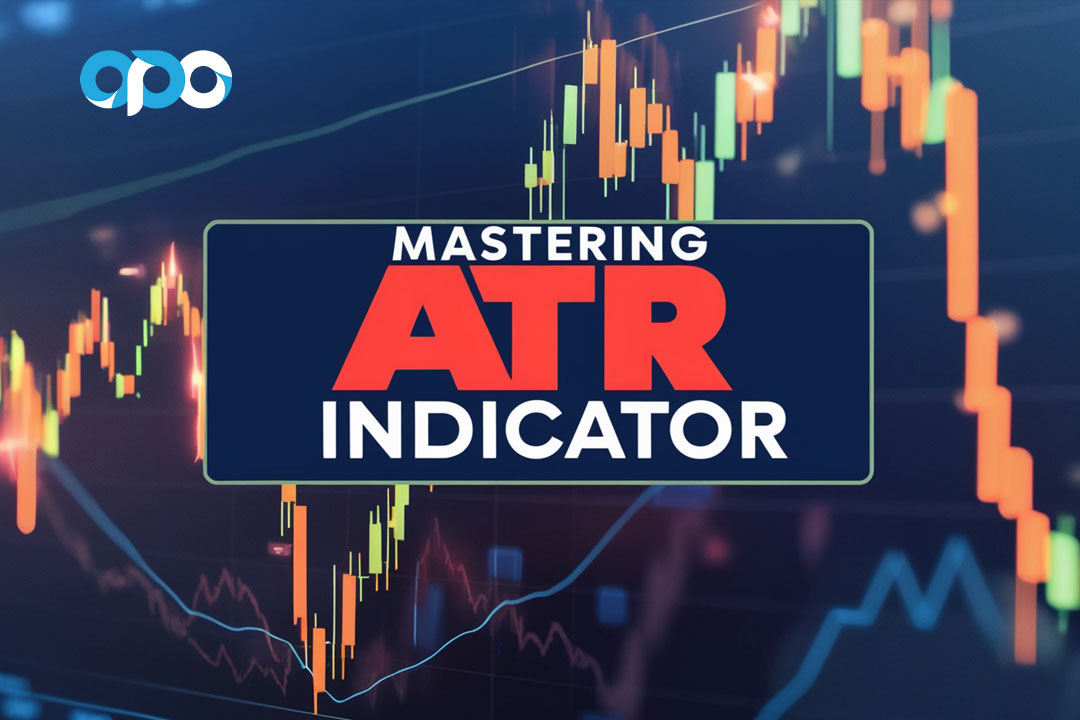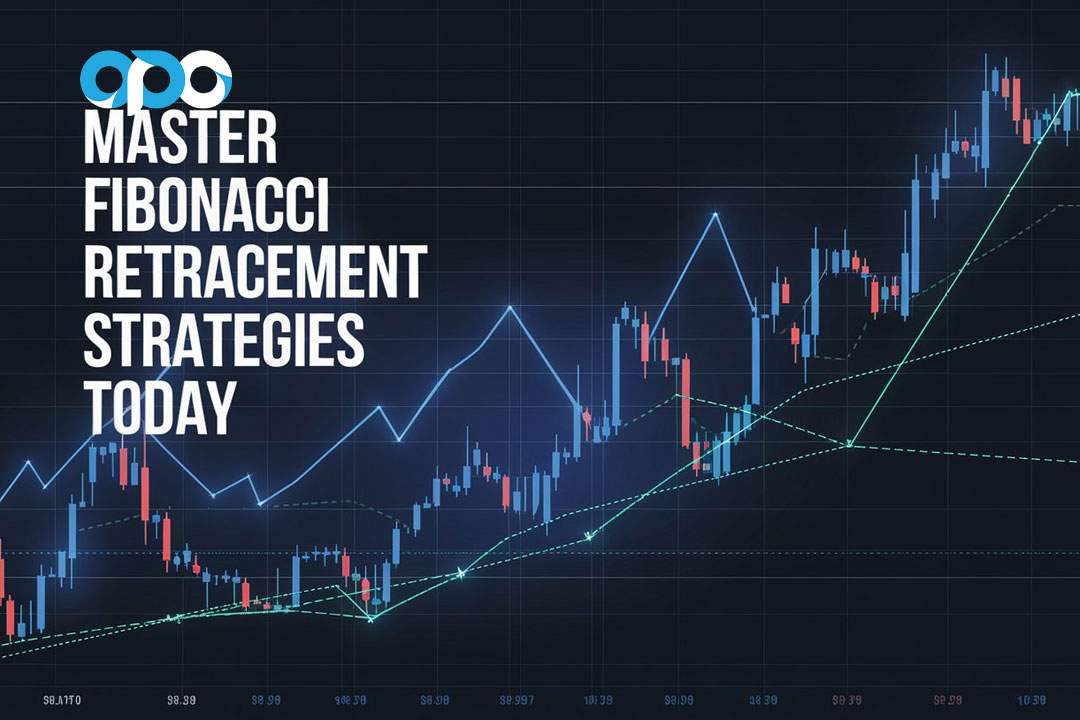When it comes to trading forex during Consumer Price Index (CPI) releases, selecting the right currency pairs can make or break your success. The top 5 forex pairs for dominating CPI trading are EUR/USD, USD/JPY, GBP/USD, AUD/USD, and USD/CAD. These pairs offer the ideal combination of liquidity, volatility, and responsiveness to inflation data, making them prime candidates for traders looking to capitalize on CPI-induced market movements. In this comprehensive guide, we’ll dive deep into each of these pairs, exploring their unique characteristics, historical performance during CPI releases, and specific strategies to maximize your trading potential.
The Power Five: Mastering CPI Trading with Top Forex Pairs
1. EUR/USD: The King of Forex During CPI Releases
The EUR/USD pair, often referred to as “the euro,” is the most traded currency pair in the forex market, accounting for approximately 28% of daily forex transactions. This unparalleled liquidity makes it an excellent choice for CPI trading, as it allows for tight spreads and easy execution of trades, even during volatile market conditions.

Why EUR/USD shines during CPI releases:
a) High sensitivity to US economic data: As the US dollar is the base currency, CPI releases directly impact this pair. b) Robust trading volume: Ensures smooth entry and exit of positions, even during sharp price movements. c) Technical clarity: Clear trend identification and support/resistance levels due to high trader participation.
Historical performance:
On average, EUR/USD experiences a 50-70 pip move within the first 30 minutes following a significant CPI deviation from expectations. This provides ample opportunity for both short-term scalpers and swing traders to profit.
Strategy tip:
Look for a break of the 5-minute chart’s pre-release range after the CPI announcement. A strong break often indicates the direction of the short-term trend, allowing you to ride the momentum for quick profits.
Advanced EUR/USD CPI trading technique:
Implement a “fade the initial move” strategy. Often, the first reaction to CPI data can be exaggerated. Wait for the initial spike to lose momentum, then enter a position in the opposite direction, targeting a retracement to the pre-release level.
2. USD/JPY: The Safe-Haven Pair with a CPI Twist
USD/JPY, nicknamed “the gopher,” is the second most traded pair and accounts for about 13% of daily forex volume. Its unique status as a safe-haven pair adds an interesting dynamic to CPI trading.
Why USD/JPY is crucial for CPI traders:
a) Sensitivity to interest rate expectations: CPI data influences Fed policy outlook, directly impacting USD/JPY. b) Yen’s safe-haven status: Can lead to counterintuitive moves during high-impact news releases. c) Generally lower volatility: Provides a more stable trading environment compared to some other pairs.
Historical performance:
USD/JPY typically sees a 30-50 pip move in the first 15 minutes post-CPI release. While this may seem smaller than EUR/USD, the moves are often more sustained, providing opportunities for longer-term positions.
Strategy tip:
Pay close attention to the 2-hour chart. A break of a key level (such as a pivot point or significant moving average) following the CPI release often signals a sustained move, perfect for swing trading opportunities.
Advanced USD/JPY CPI trading technique:
Utilize a “double confirmation” strategy. Combine the CPI release with other key technical indicators, such as the Ichimoku Cloud. Enter trades only when the CPI-induced move aligns with the Ichimoku Cloud’s signals for increased probability of success.
3. GBP/USD: The Volatile Powerhouse for CPI Trading
GBP/USD, known as “cable,” is the third most traded pair and offers exciting opportunities during CPI releases due to its heightened volatility.

Why GBP/USD excels in CPI trading:
a) High volatility: Offers potential for larger price swings and profit opportunities. b) Strong correlation with EUR/USD: Allows for interesting pair trading strategies. c) Sensitivity to both US and UK economic data: Provides additional trading opportunities around UK inflation releases.
Historical performance:
GBP/USD often experiences 60-90 pip moves within the first hour after a significant CPI release, making it a favorite among traders seeking larger price swings.
Strategy tip:
Utilize a breakout strategy on the 15-minute chart. Look for a strong candle closing beyond the pre-release high or low, then enter in the direction of the breakout with a stop loss on the other side of the range.
Advanced GBP/USD CPI trading technique:
Implement a “correlation divergence” strategy. Monitor both GBP/USD and EUR/USD during CPI releases. If one pair breaks a key level while the other doesn’t, consider a trade on the lagging pair in anticipation of a catch-up move.
4. AUD/USD: The Commodity Currency’s CPI Reaction
AUD/USD, affectionately called “the Aussie,” offers a unique perspective on CPI trading due to its status as a commodity currency.
Why AUD/USD is valuable for CPI trading:
a) Sensitivity to global economic health: CPI data influences perceptions of US economic strength, impacting risk sentiment. b) Correlation with commodity prices: Adds an extra layer of analysis to your CPI trading strategy. c) Carries trades implications: CPI data affects interest rate differentials, influencing carry trade attractiveness.
Historical performance:
AUD/USD typically sees 40-60 pip moves in the hour following a significant CPI release, with the potential for larger swings if the data strongly influences risk sentiment.
Strategy tip:
Combine CPI analysis with commodity price movements, especially gold and copper. A strong CPI print coupled with rising commodity prices can lead to significant AUD/USD upside, and vice versa.
Advanced AUD/USD CPI trading technique:
Employ a “risk sentiment confirmation” strategy. Use the VIX (volatility index) as a complementary indicator. If CPI data is positive for the USD but the VIX is declining (indicating reduced market fear), consider long AUD/USD positions as risk appetite may overshadow direct CPI impacts.
5. USD/CAD: The Oil-Influenced CPI Trader
USD/CAD, known as “the loonie,” rounds out our top 5 list with its unique relationship to oil prices and sensitivity to both US and Canadian economic data.
Why USD/CAD is essential for CPI trading:
a) Dual economic indicator sensitivity: Reacts to both US and Canadian inflation data. b) Oil price correlation: Adds complexity and opportunity to CPI trading strategies. c) Generally lower volatility than GBP/USD: Offers a middle ground between stability and movement.
Historical performance:
USD/CAD typically experiences 30-50 pip moves in the first 30 minutes post-CPI release, with the potential for larger swings if oil prices are also volatile.
Strategy tip:
Monitor oil prices in conjunction with CPI data. A weak US CPI print combined with rising oil prices can create a powerful downward move in USD/CAD, offering excellent short opportunities.
Advanced USD/CAD CPI trading technique:
Implement a “triple confluence” strategy. Align CPI data, oil price movements, and key technical levels. Enter trades only when all three factors point in the same direction for high-probability setups.
Read More: Mastering FOMC News Trading
Advanced CPI Trading Strategies for the Top 5 Pairs
1. Correlation Trading:
Exploit the relationships between pairs during CPI releases. For example, if EUR/USD and GBP/USD are highly correlated, but one lags in its CPI reaction, consider a catch-up trade on the lagging pair.

2. News Straddle:
Place pending orders above and below the pre-release range for your chosen pair. Cancel the untriggered order once price breaks out in either direction. This strategy works well with volatile pairs like GBP/USD.
3. Fibonacci Retracement Trading:
After the initial CPI-induced move, use Fibonacci retracement levels to identify potential entry points for continuation trades. This works particularly well with trending pairs like EUR/USD and USD/JPY.
4. Multiple Time Frame Analysis:
Combine short-term (1-5 minute) charts for entry timing with longer-term (1-4 hour) charts for overall direction. This approach is effective across all five pairs, helping to avoid false breakouts.
5. Sentiment Analysis:
Use Commitment of Traders (COT) reports to gauge market positioning before CPI releases. Extreme positioning can lead to sharp reversals if the CPI data contradicts prevailing sentiment.
Read More: How To Trade GDP News In Forex
Risk Management in CPI Trading

Proper risk management is crucial when trading these volatile events. Consider the following tips:
1. Use wider stops:
CPI releases can cause significant volatility. Set your stops at least 20-30 pips away from your entry to avoid premature stop-outs.
2. Reduce position size:
Given the increased volatility, consider trading with a smaller position size than usual to manage risk effectively.
3. Implement a news filter:
Avoid trading minor CPI revisions. Focus on significant releases that are more likely to cause substantial market moves.
4. Use options for protection:
Consider buying out-of-the-money options as a hedge against unexpected large moves in your chosen pair.
5. Always have a pre-defined exit strategy:
Whether it’s a fixed take-profit level or a trailing stop, know your exit plan before entering the trade.
Preparing for CPI Releases: A Trader’s Checklist

To maximize your chances of success when trading these top 5 pairs during CPI releases, follow this comprehensive preparation checklist:
- Review previous CPI data and market reactions
- Analyze current market expectations for the upcoming release
- Study recent price action and identify key support/resistance levels
- Set up your charts with relevant indicators and time frames
- Check economic calendars for any conflicting news releases
- Review your trading plan and risk management rules
- Ensure your trading platform is functioning correctly
- Have a backup internet connection ready
- Stay informed about any recent economic developments that might influence CPI impact
- Practice your chosen strategies on a demo account before live trading
Read More: Master High Volatility News In Forex
The Psychology of CPI Trading: Maintaining Emotional Control
Trading during high-impact news events like CPI releases can be emotionally challenging. Here are some tips to maintain psychological balance:
- Stick to your pre-defined trading plan
- Accept that not every trade will be a winner
- Avoid revenge trading after a loss
- Take breaks between trades to reset your mental state
- Keep a trading journal to track your emotional responses
- Practice mindfulness techniques to stay focused
- Set realistic profit targets and avoid greed
- Don’t let fear prevent you from taking valid setups
- Celebrate your successes, but stay humble
- Continuously educate yourself to build confidence in your strategies
Conclusion
Mastering CPI trading with these top 5 forex pairs – EUR/USD, USD/JPY, GBP/USD, AUD/USD, and USD/CAD – can significantly enhance your trading success. Each pair offers unique characteristics and opportunities, allowing you to diversify your CPI trading strategy and capitalize on various market conditions.
Remember, successful CPI trading requires more than just knowing which pairs to trade. It demands thorough preparation, quick decision-making, and strict risk management. By combining the insights and strategies outlined in this guide with consistent practice and analysis, you’ll be well-equipped to navigate the volatile waters of CPI releases and potentially unlock substantial forex profits.
Stay informed, remain disciplined, and always be prepared for the unexpected. With dedication and continuous improvement, you can turn CPI releases into powerful profit opportunities. Happy trading!
How often are CPI releases, and when do they typically occur?
CPI data is usually released monthly. In the United States, the Bureau of Labor Statistics releases CPI data around the middle of each month, typically at 8:30 AM Eastern Time.
Should I trade all five pairs during every CPI release?
It’s generally not advisable to trade all pairs simultaneously, as this can spread your focus too thin. Instead, choose 1-2 pairs that you’re most comfortable with and that show the clearest setups for each release.
How can I prepare for CPI releases?
Prepare by reviewing previous CPI data, market expectations for the upcoming release, and recent price action in your chosen pairs. Set up your charts in advance and have a clear trading plan ready.
Are there any specific economic calendars you recommend for tracking CPI releases?
Popular and reliable economic calendars include those provided by Forex Factory, Investing.com, and FXStreet. These offer detailed information about upcoming releases and market expectations.
How long do CPI-induced moves typically last?
The initial reaction can last anywhere from a few minutes to several hours. However, significant CPI surprises can influence the market for days or even weeks, especially if they change expectations about central bank policy.
What’s the best time frame to trade CPI releases?
The optimal time frame can vary depending on your trading style. Short-term traders might focus on 1-5 minute charts for quick scalps, while swing traders might prefer 15-minute to 1-hour charts to capture larger moves.
How do I handle false breakouts during CPI releases?
To mitigate false breakouts, wait for confirmation before entering trades. This could mean waiting for a candle to close beyond a key level or using indicators like RSI to confirm the move’s strength.
How do other economic indicators interact with CPI for these currency pairs?
Other indicators like GDP, employment data, and interest rate decisions can amplify or dampen CPI effects. Always consider the broader economic context when trading CPI releases.
Can I use the same strategies for trading other countries’ CPI releases?
While the general principles remain similar, it’s important to understand each country’s economic dynamics and how their currency typically reacts to inflation data. Adjust your strategies accordingly for non-US CPI releases.









One Response
I enjoy looking through and I conceive this website got some truly utilitarian stuff on it! .